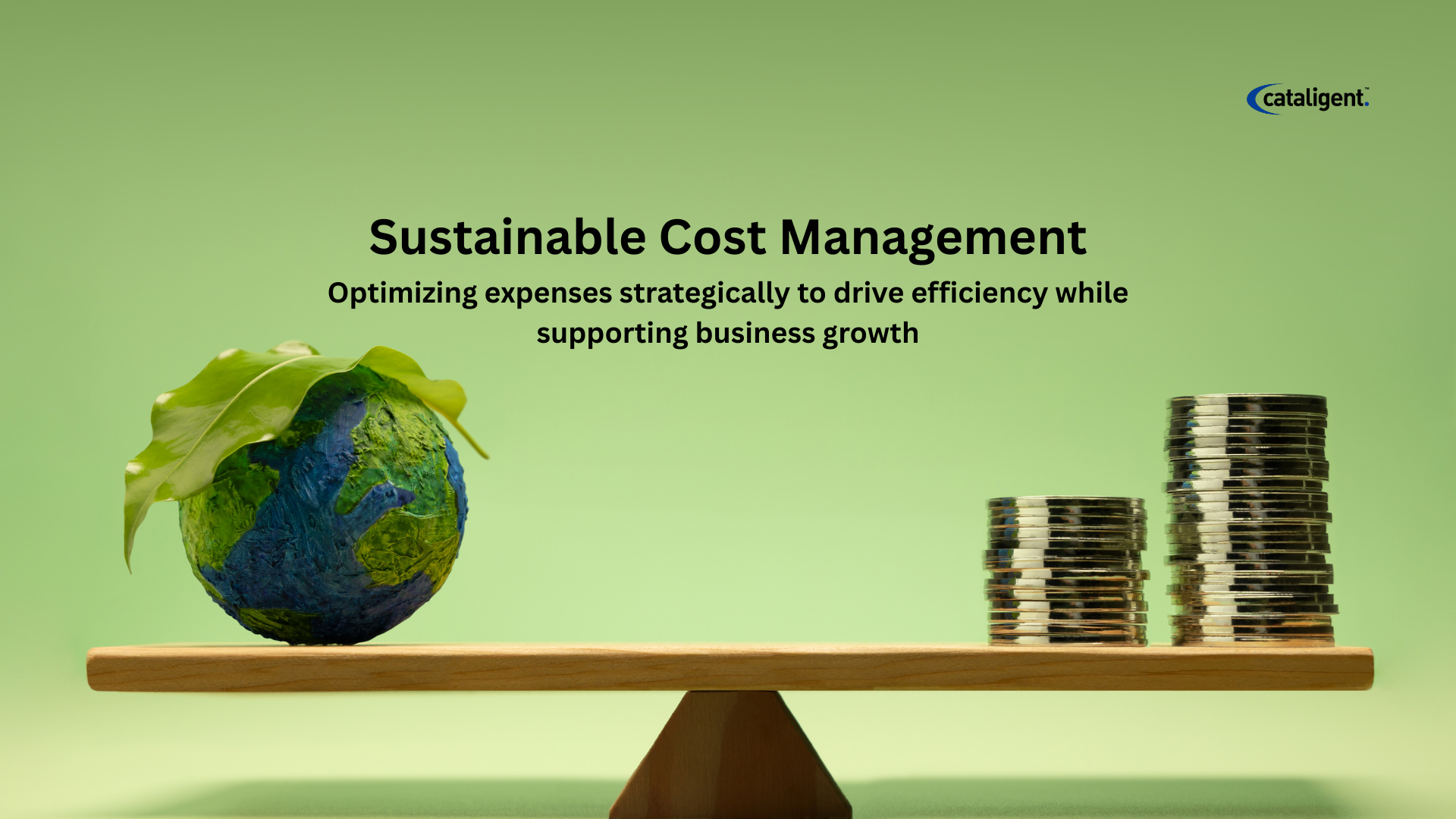The biggest challenge in cost management today isn’t cutting expenses — it’s sustaining efficiency without weakening growth potential. Traditional cost-reduction methods often focus on temporary relief, but when costs creep back, organizations end up in the same position again. Sustainable cost management is different: it’s about embedding efficiency into the very DNA of operations so that organizations can remain lean, agile, and future-ready over the long term.
What is Sustainable Cost Management?
Sustainable cost management is the practice of creating long-lasting financial efficiency by balancing expense controls with continuous investment in growth, innovation, and resilience. It goes beyond one-time cost-cutting and instead seeks to make efficiency a self-sustaining part of the culture, processes, and decision-making.
- Systemic efficiency, not quick fixes: Instead of ad-hoc budget cuts, sustainable cost management looks at how the entire system can operate more efficiently — from supply chains to IT infrastructure.
- Scalable practices: Cost management frameworks are designed to adapt as the business grows, ensuring that efficiency doesn’t break down as scale increases.
- Balanced resource allocation: Efforts are not about taking away funds but redistributing them to where they deliver maximum impact, like innovation or digital upgrades.
- Cultural integration: Sustainable savings are only possible when employees at all levels understand the importance of efficiency and are empowered to contribute ideas and actions.
Why It Matters
Markets are more volatile than ever, with shifting consumer demands, rapid digitalization, and global economic pressures. In this environment, businesses cannot afford to rely on one-off cost-cutting programs that weaken competitiveness. Instead, they need a sustainable model of cost control that grows with them.
- Future-proofing operations: Sustainable strategies ensure organizations are not caught off guard by market disruptions. Leaner structures mean faster adaptation.
- Investor and stakeholder confidence: Companies with proven, sustainable cost management demonstrate stronger governance and long-term stability.
- Employee engagement: When efficiency is embedded into processes rather than imposed through harsh cuts, employees feel empowered rather than threatened.
- Competitive differentiation: Businesses that maintain efficiency while continuing to invest in customer experience and innovation stand out in crowded markets.
Business Transformation Through Sustainable Cost Management
Cost management, when applied sustainably, becomes a transformation driver. It’s not only about saving money — it’s about reshaping the business for resilience and growth.
- Embedding continuous improvement into operations: Teams learn to constantly look for ways to optimize, making efficiency an everyday habit.
- Shifting from reactive to proactive decision-making: Instead of waiting for budget pressures, leaders anticipate inefficiencies and address them early.
- Integrating sustainability and ESG principles: Cost efficiency often aligns with environmental and social goals, such as reducing waste and improving resource utilization.
- Creating agility for reinvestment: Savings are redirected into transformation projects that position the organization for long-term success.
How Sustainable Cost Management Works in Practice
Organizations that adopt sustainable cost practices typically move through a few clear phases:
- Diagnosis and Cost Visibility
Developing a full view of spending patterns across functions and identifying areas of recurring waste. - Efficiency Blueprint Design
Creating a roadmap that balances cost reductions with growth investments, ensuring long-term viability. - Embedding Efficiency into Processes
Redesigning workflows, introducing automation, and removing redundancies so that cost savings become permanent. - Cultural Alignment and Ownership
Engaging employees through awareness and accountability, making cost management part of the organizational mindset. - Reinvestment for Transformation
Using the savings strategically — whether to scale operations, invest in digital tools, or strengthen customer engagement.
How Cataligent Helps
Cataligent specializes in turning cost management into a sustainable competitive advantage rather than a one-time fix. By helping organizations design systems that embed efficiency into everyday operations, Cataligent ensures cost savings are not just realized but sustained and multiplied over time.
Cataligent’s approach to sustainable cost management includes:
- In-depth financial diagnostics to uncover recurring inefficiencies.
- Tailored efficiency blueprints that align savings with business goals.
- Integration of automation and digital tools to ensure long-term operational efficiency.
- Change management programs that instill cost accountability across teams.
- Reinvestment strategies that direct freed-up resources toward innovation and growth.
With Cataligent, sustainable cost management becomes more than an initiative — it becomes a core driver of business transformation and long-term success.

